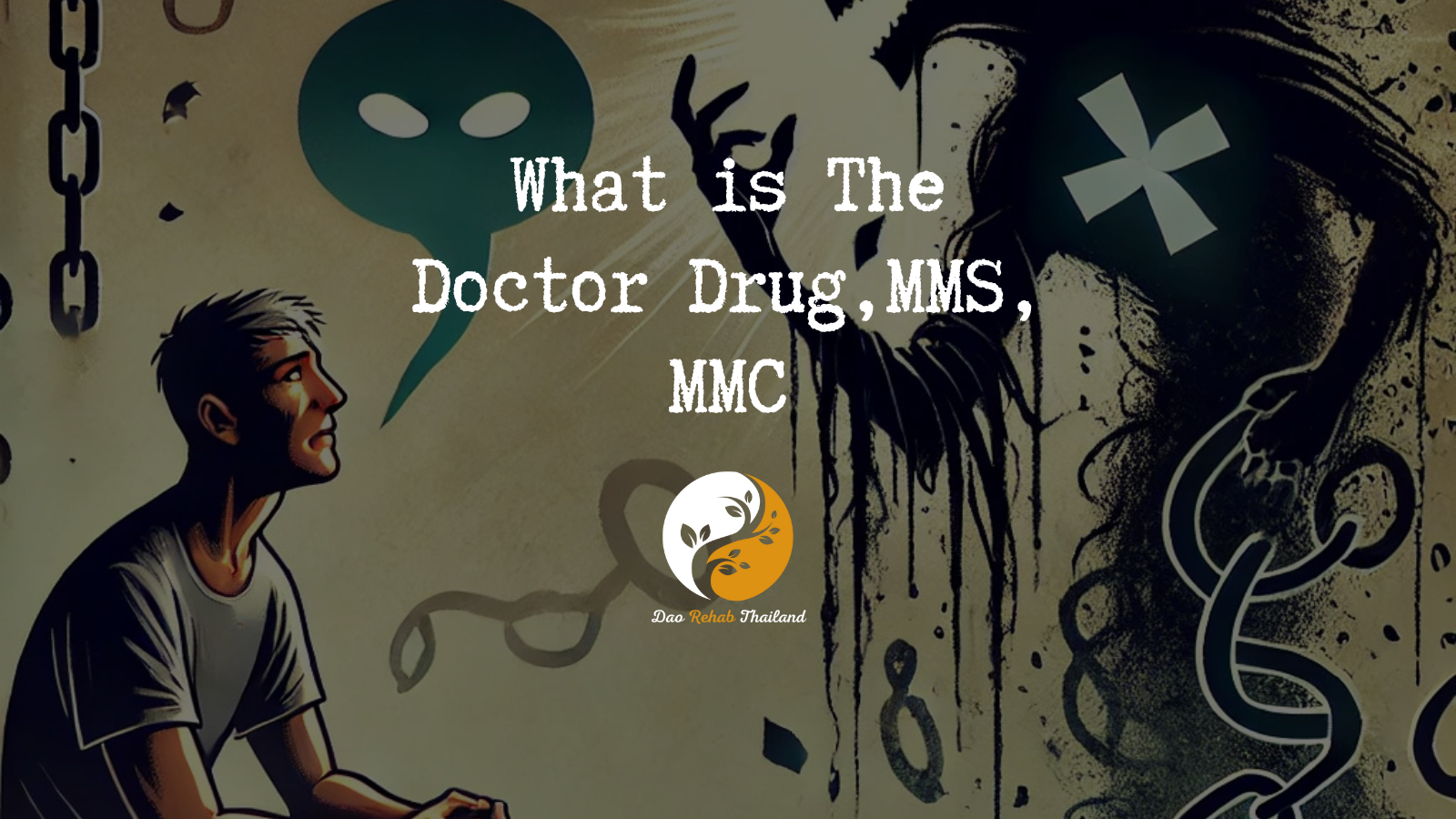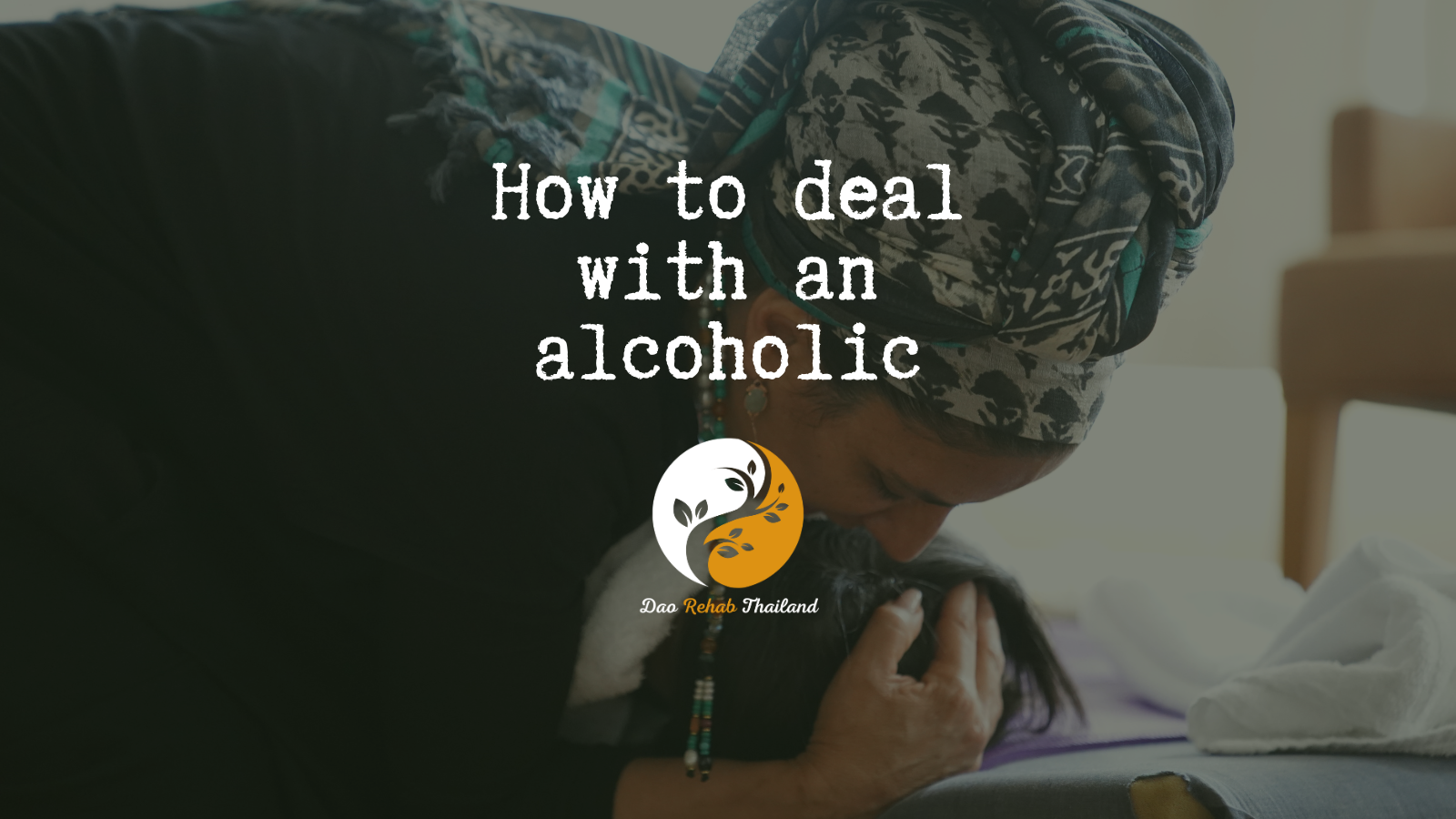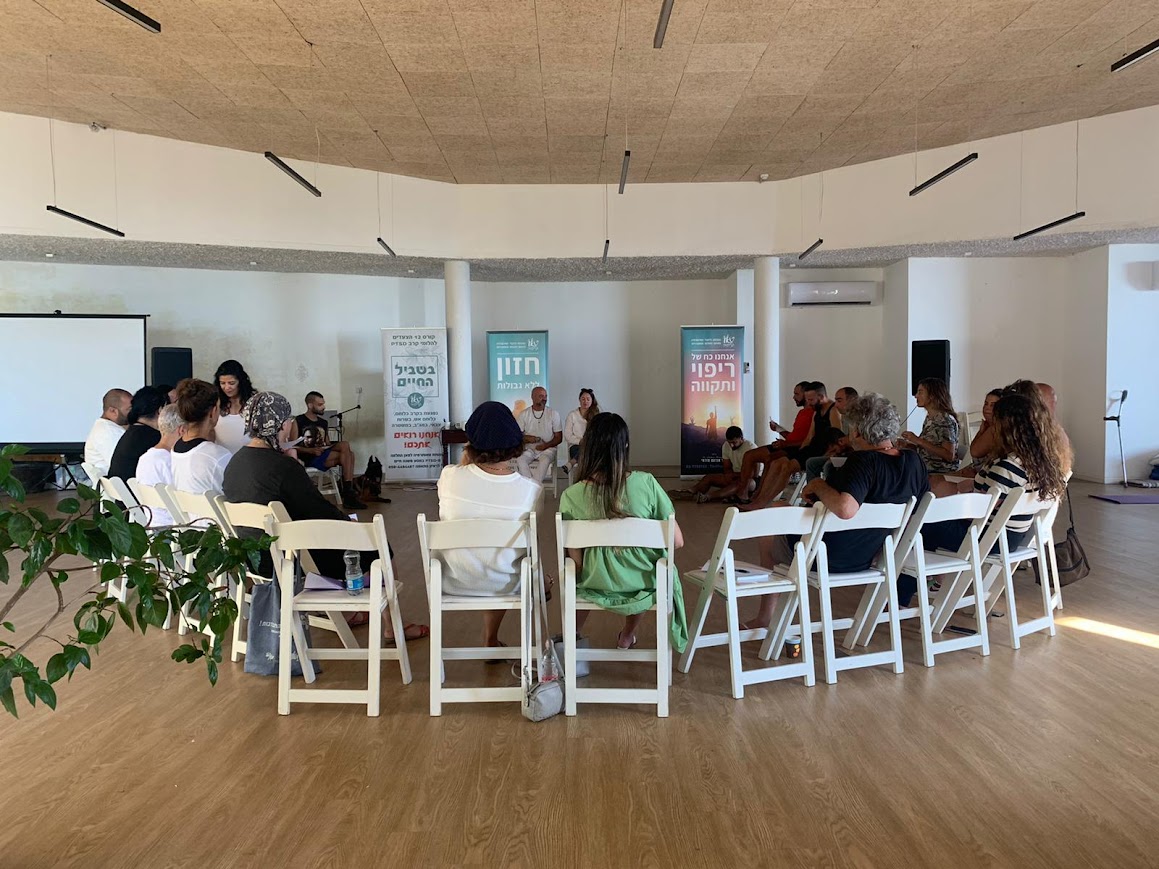
What is The Doctor Drug, MMS, MMC
The drug "Doctor"
“Turning the impossible into possible”

"Detox from Drugs at a Luxury Holistic Center in Thailand and Israel"

What is The Doctor, MMS, MMC, and also The Burner?
The drug “Doctor” is likely a street name for a specific type of drug, possibly one with purported medical properties or particularly strong effects. The term could refer to a specific substance, such as prescription drugs being misused, or to a synthetic drug sold under this nickname. Would you like further details or clarification about a specific substance?
"Holistic Center for Trauma, Addiction, and Mental Imbalance Treatment in Thailand"
“Come to the beginning of your journey to freedom from addiction to alcohol, drugs, and pills, and rediscover your life within the serene embrace of DaoTherapy Rehab in Thailand—where holistic healing meets empowering recovery.”
DaoTherapy Holistic Rehab
Key Elements of Drugs Detox:
Medical Supervision: Drugs detox must be conducted under medical supervision, as the body may experience withdrawal symptoms. These can include nausea, anxiety, muscle aches, and insomnia. A medical team will monitor and manage these symptoms to ensure the patient’s safety and comfort.
Holistic Therapies:
Holistic Therapies: Many detox programs incorporate holistic therapies such as mindfulness, yoga, and meditation to help individuals cope with stress and anxiety during the detox process. These therapies support the mind-body connection and contribute to overall recovery.
Tapering Process
Tapering Process: Drugs detox often involves a gradual tapering of the drug to reduce withdrawal severity. Doctors will slowly decrease the dosage over time to allow the body to adjust to lower levels of the substance.
Psychological Support:
Psychological Support: Like any addiction recovery process, detox from Drugs includes psychological support. This can involve counseling, therapy, or support groups to address the mental and emotional aspects of addiction.
Post-Detox Treatment:
Post-Detox Treatment: After completing detox, continuing treatment is crucial to prevent relapse. This often includes participation in ongoing therapy, group support, and the development of new coping strategies to maintain sobriety.
What is The Doctor
The drug “Doctor” belongs to a group of substances called “Mamsi,” characterized by their chemical composition containing MMC (Methyl Meth Cathinone).
These substances are part of the stimulant family, which affects the central nervous system, and are categorized as designer drugs. In Israel, they are often referred to as “party drugs” and include substances like “Nice Guy,” “Hagigat,” and others.
Designer drugs are synthetic substances developed in the 20th century in response to the prohibition of drugs like cocaine and morphine under international conventions such as the Opium Convention. A key feature of designer drugs is the ability to modify their chemical structure slightly to bypass controlled substances laws.
In Israel, the “Law to Combat the Phenomenon of Using Dangerous Substances” was enacted in 2013, granting the Ministry of Health’s Director-General the authority to temporarily ban new substances until their legal status is determined.

contact us
Contact us with your questions
We would love to speak with you! Feel free to reach out with any questions.

get in touch
Schedule a free consultation
Schedule a free consultation with our team and let’s make things happen!
Expansion on the Drug "Doctor" and Designer Drugs
What are Designer Drugs?
Designer drugs are synthetic substances first created in the 20th century, primarily to bypass legal restrictions on drugs such as cocaine, heroin, and morphine. These drugs are engineered in laboratories to have psychoactive effects similar to prohibited substances, but with slight chemical modifications to evade controlled substances regulations.
Characteristics of the Drug “Doctor” and Mamsi Drugs
Chemical Composition:
The drug “Doctor” contains MMC (Methyl Meth Cathinone), a derivative of cathinone. Cathinones are natural chemicals derived from the khat plant, but in the case of Mamsi drugs, they are synthetic versions.
Effects:
- Stimulate the central nervous system.
- Create feelings of euphoria, high energy, reduced appetite, and alertness.
- May cause side effects such as rapid heartbeat, anxiety, paranoia, sleep disturbances, and sometimes violence or psychosis.Availability:
These drugs are often sold in convenience stores or online and are marketed under appealing names such as “Nice Guy” and “Hagigat.” They may come in the form of powders, pills, or liquids.Health Risks:
- Unpredictable effects due to chemical variations.
- Toxicity to the liver, kidneys, and cardiovascular system.
- High potential for rapid addiction and long-term effects on the brain.
Legal Status in Israel Regarding Designer Drugs
In Israel, lawmakers recognized the persistent issue of designer drugs, as manufacturers continuously modify their chemical structure whenever a specific substance is banned. In 2013, the Israeli parliament enacted the “Law to Combat the Phenomenon of Using Dangerous Substances.”
This law allows the Director-General of the Ministry of Health to:
- Declare a temporary ban on the distribution of a new substance.
- Add new substances to the list of controlled drugs.
Challenges in Enforcement
- Monitoring new substances: Designer drugs are produced at a rapid pace, making it challenging to track every new version.
- Deceptive marketing: Bright packaging and “innocent” names are used to attract younger audiences.
- Quick addiction: These drugs have a strong addiction potential, even with short-term use.
Treatment for Addiction to Designer Drugs
Rehabilitation centers face complex challenges in treating users of designer drugs. The treatment includes:
- Physiological care: Detoxification under medical supervision.
- Psychological care: Addressing psychoactive effects and mental health disorders caused by drug use.
- Rehabilitation: Long-term support to prevent relapse, including group work, psycho-social support, and alternative therapies such as yoga and relaxation techniques.
the drug "Doctor" is highly addictive.
Yes, the drug “Doctor” (and others from the Mamsi and designer drug groups) is highly addictive. Its stimulant properties, such as euphoria, high energy, and alertness, lead users to experience a strong urge to use it repeatedly to recreate the effect. Additionally, the drug can cause psychological and physiological dependence in a relatively short time, especially with frequent use or in high doses.
The addiction process includes:
- Psychological dependence: The user feels the need for the drug to cope with mental states like stress, depression, or restlessness.
- Physiological dependence: The body adapts to the drug and requires higher doses to achieve the same effect, a condition known as tolerance.
Addiction to such substances can result in severe damage to the nervous system, liver and kidney function, as well as mental health issues such as anxiety, depression, and psychosis.
The drug "Doctor" (MMS/MMC) is used in various ways
The drug “Doctor” (MMS/MMC) is used in various ways, depending on its form and the user’s intent. Here are the common methods of use:
Ingestion:
- The drug is consumed in the form of pills, capsules, or powder mixed with water.
- This is the most common method of use in recreational settings.
Snorting:
- When available as a powder, users inhale it through the nose (using a straw or directly).
- This method results in faster effects but increases the risk of nasal tissue damage.
Smoking:
- In some cases, the drug is processed into a form suitable for smoking (e.g., rolled into a cigarette or using smoking tools).
Injection:
- Users dilute the drug and inject it directly into the bloodstream.
- This is a relatively rare but highly dangerous method due to risks of infections, overdose, and tissue damage.
Dissolving in liquids:
- In some cases, the drug is dissolved in liquids and consumed as a drink.
Risks Associated with Usage Methods:
- Overdose: Methods like injection or snorting increase the risk of overdose due to rapid absorption into the bloodstream.
- Physical harm: Snorting can cause severe nasal tissue damage; non-sterile injections can lead to serious infections.
- Addiction: Faster effects increase the likelihood of addiction.
Psychological Support:
Psychological Support: Like any addiction recovery process, detox from Subutex includes psychological support. This can involve counseling, therapy, or support groups to address the mental and emotional aspects of addiction.
After consuming the drug "Doctor"
After consuming the drug “Doctor” (MMC), the effects can vary based on the dose, method of use, and individual response. However, common sensations include:
Stages and Effects:
Onset (within minutes):
- A sudden and immediate sense of euphoria.
- A surge of increased energy and heightened alertness.
- Reduced feelings of fatigue.
Peak (within 30-60 minutes):
- A sense of power and self-confidence.
- Increased motor activity (uncontrolled movements).
- Sometimes feelings of social “connection” and positive emotions toward others.
- Suppressed appetite.
Comedown (after a few hours):
- Sudden fatigue.
- Low mood, anxiety, or depression.
- Irritability and a sense of mental emptiness.
Possible Side Effects:
- Rapid or irregular heartbeat.
- Excessive sweating.
- Paranoia or feelings of being watched.
- Temporary psychosis (especially with overuse).
Long-Term Effects:
Regular use or high doses can lead to psychological dependence, cognitive impairments, memory issues, emotional dysregulation, and in some cases, chronic mental health disorders.
Withdrawal symptoms from the drug "Doctor"
Withdrawal symptoms from the drug “Doctor” (MMS/MMC) and other stimulants vary in intensity depending on the duration of use, dosages consumed, and the user’s physical and mental state. Common symptoms after stopping use include:
Physical Symptoms:
- Increased fatigue:
- Extreme exhaustion and difficulty getting out of bed.
- Headaches and body aches:
- Pain or tension in muscles and joints.
- Appetite changes:
- Increased hunger or, conversely, loss of appetite.
- Sweating and tremors:
- Episodes of hot or cold sweats and bodily shakes.
Psychological Symptoms:
- Depression:
- Deep sadness and hopelessness due to dopamine depletion.
- Anxiety:
- Constant tension or heightened worries.
- Restlessness and irritability:
- Difficulty sitting still or feeling uneasy.
- Intense cravings:
- A strong urge to use the drug again to ease symptoms.
Cognitive Symptoms:
- Difficulty concentrating and memory issues:
- Trouble thinking clearly or recalling information.
- Mental slowing:
- A feeling of “brain fog” and difficulty making decisions.
Duration of Withdrawal:
- Acute phase (24-72 hours): Severe physical symptoms such as fatigue and pain.
- Intermediate phase (4-10 days): Psychological symptoms and cravings.
- Post-acute phase (weeks to months): Persistent psychological challenges like depression and cravings.
How to Manage Withdrawal Symptoms?
- Medical supervision: Medical care and support can help reduce symptoms.
- Emotional support: Psychological therapy or support groups like 12 Steps.
- Physical care: Balanced nutrition, adequate sleep, and moderate exercise.
- Complementary therapies: Meditation, yoga, and relaxation techniques can ease withdrawal symptoms.








